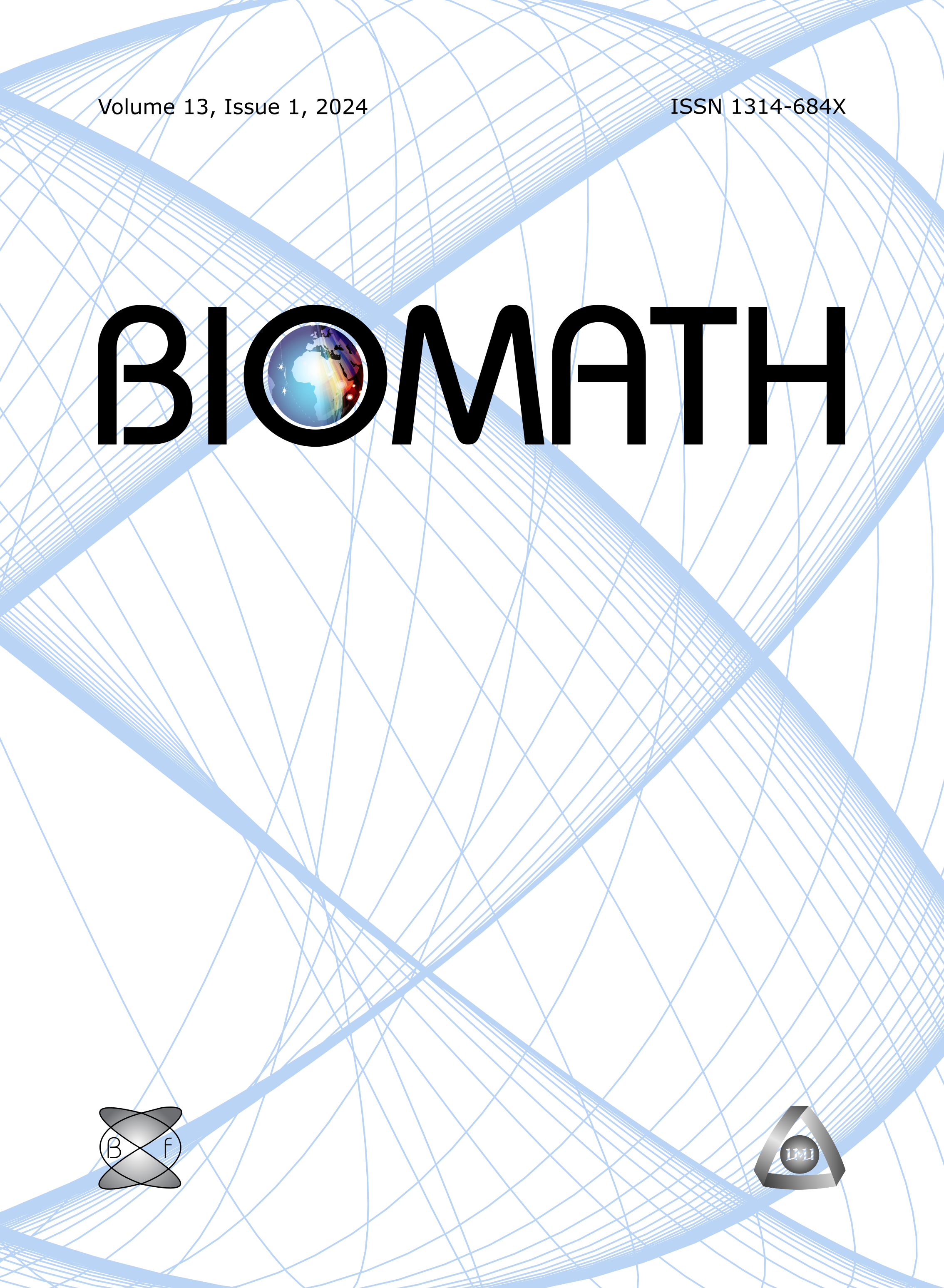Coupled cell networks: Boolean perspective
DOI:
https://doi.org/10.11145/j.biomath.2017.03.227Keywords:
Boolean networks, coupled cell networks, discrete modelsAbstract
During the 1980s and early 1990s, Martin Golubitsky and Ian Stewart В formulated and developed a theory of "coupled cell networks" (CCNs). Their research was primarily focused onquadrupeds' gaits and they applied the framework of differential equations. Golubitsky and Stewart were particularly interested in change of synchrony between $4$ legs of an animal. For example what happens when the animal speeds up from walk to gallop.ВThe most important concept of their theory is a {\it cell}. The cell captures the dynamics of one unit and a dynamical system consists of many identical (governed by the same principles) cells influencing (coupling to) each other. Models based on identical cooperating units are fairly common in many areas, especially in biology, ecology and sociology.В
The goal of investigation in Coupled Cell Networks theory В is understanding the dependencies and interplay between dynamics of an individual cell, graph of connections between cells, and the nature of couplings.В \vspace*{0.2em}
In this paper, I redefine Coupled Cell Networks using framework of Boolean functions. This moves the entire theory to a new setting. Some phenomena proved to be very similar as for continuous networks and some are completely different. Also, for discrete networks we ask questions differently and study different phenomena. The paper presents two examples: networks that bring 2-cell bidirectional ring as a quotient and networks that bring 3-cell bidirectional ring as a quotient.
Downloads
Published
Issue
Section
License
The journal Biomath is an open access journal. All published articles are immeditely available online and the respective DOI link activated. All articles can be access for free and no reader registration of any sort is required. No fees are charged to authors for article submission or processing. Online publications are funded through volunteer work, donations and grants.
Authors who publish with this journal agree to the following terms:
- Authors retain copyright and grant the journal right of first publication with the work simultaneously licensed under a Creative Commons Attribution License 4.0 that allows others to share the work with an acknowledgement of the work's authorship and initial publication in this journal.
- Authors are able to enter into separate, additional contractual arrangements for the non-exclusive distribution of the journal's published version of the work (e.g., post it to an institutional repository or publish it in a book), with an acknowledgement of its initial publication in this journal.
- Authors are permitted and encouraged to post their work online (e.g., in institutional repositories or on their website) prior to and during the submission process, as it can lead to productive exchanges, as well as earlier and greater citation of published work (See The Effect of Open Access).

